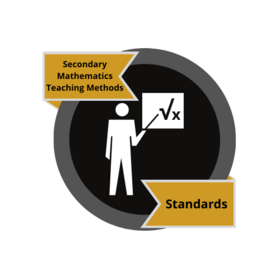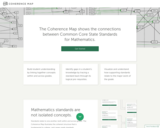
Online statistical software.
- Subject:
- Professional Learning
- Material Type:
- Activity/Lab
- Provider:
- CODAP
- Date Added:
- 06/08/2023

This collection contains all of the microcredentials and resources within the Utah Microcredentials Methods of Teaching stack.

Online statistical software.

A visual map of the standards where each standard is linked both forwards and backwards to prior and future grades.

A spreadsheet of a collection of 3 act tasks by standard.

Standards that are marked with a star indicate distinct opportunities to engage with modeling in the Utah Core Standards.

A simplified view of the standards for each grade level (through grade 8) with guidance on which topics, strands, and standards are the most important for that grade.

A comprehensive and coherent set of mathematics standards for each and every student from prekindergarten through grade 12, Principles and Standards is the first set of rigorous, college and career readiness standards for the 21st century. Principles and Standards for School Mathematics outlines the essential components of a high-quality school mathematics program. It emphasizes the need for well-prepared and well-supported teachers and administrators, and it acknowledges the importance of a carefully organized system for assessing students’ learning and a program’s effectiveness. Principles and Standards calls for all partners—students, teachers, administrators, community leaders, and parents—to contribute to building a high-quality mathematics program for each and every student.

This resource includes links to professional learning opportunities offered through USBE. This also includes book studies for: ● Strength in Numbers ● The Impact of Identity in K-8 Mathematics ● Great Ways to Differentiate Secondary Mathematics Instruction

Documents that break down key standards in detail and demonstrates how key concepts connect across grade levels.

This microcredential represents educators' ability to plan an effective Secondary Mathematics lesson plan that utilizes appropriate and varied instructional strategies. This microcredential fulfills one of the requirements of a pathway for endorsement. Click the More Info button to learn more.

This microcredential represents educators' use of a variety of assessment types contextualized within a unit plan and the use of those assessment results to inform instruction. This microcredential fulfills one of the requirements of a pathway for endorsement. Click the More Info button to learn more.

This microcredential represents educators' ability to plan an effective Secondary Mathematics unit plan that is aligned to grade-specific standards, anticipates student responses, and includes questions to further student’s learning. This microcredential fulfills one of the requirements of a pathway for endorsement. Click the More Info button to learn more.

This microcredential represents educators' understanding of how key mathematical ideas build across grades and how that progression of ideas impacts the standards in a selected course.

This microcredential represents educators' effective use of both mathematics educational technologies (e.g. Desmos, Geogebra, virtual manipulatives) and general educational technologies (e.g. Google Classroom, Canvas) for student learning. This microcredential fulfills one of the requirements of a pathway for endorsement. Click the More Info button to learn more.

An optional unit plan template that may help you structure your unit plan.

This microcredential represents educators' ability to effectively and consistently use mathematical modeling as a part of mathematics instruction. This microcredential fulfills one of the requirements of a pathway for endorsement. Click the More Info button to learn more.

Dan Meyer’s TED Talk: Math Class Needs a Makeover.

Dan Meyer explains the pedagogy and structure of implementing a 3 Act Task (a kind of structured inquiry).

The purpose of this document is to provide a brief overview of the most essential content in the grade level along with a progression of how the content was addressed in the prior grade level and will prepare students for content in the future grade level. This is not a comprehensive list of content in the grade level as defined in the Utah Core Standards, but rather highlights the major work of the grade level.

This resource includes a link to: ● Core Standards ● Core Guides ● Major Works